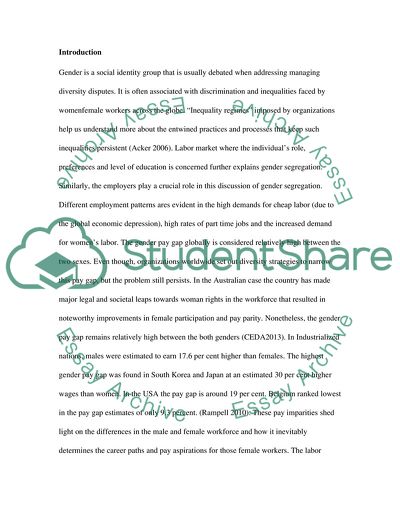Cite this document
(Discuss the factors that differentiate the male and female workforce Essay - 1, n.d.)
Discuss the factors that differentiate the male and female workforce Essay - 1. https://studentshare.org/gender-sexual-studies/1856132-discuss-the-factors-that-differentiate-the-male-and-female-workforce-and-how-these-underpin-and-structure-womenaposs-career-trajectories
Discuss the factors that differentiate the male and female workforce Essay - 1. https://studentshare.org/gender-sexual-studies/1856132-discuss-the-factors-that-differentiate-the-male-and-female-workforce-and-how-these-underpin-and-structure-womenaposs-career-trajectories
(Discuss the Factors That Differentiate the Male and Female Workforce Essay - 1)
Discuss the Factors That Differentiate the Male and Female Workforce Essay - 1. https://studentshare.org/gender-sexual-studies/1856132-discuss-the-factors-that-differentiate-the-male-and-female-workforce-and-how-these-underpin-and-structure-womenaposs-career-trajectories.
Discuss the Factors That Differentiate the Male and Female Workforce Essay - 1. https://studentshare.org/gender-sexual-studies/1856132-discuss-the-factors-that-differentiate-the-male-and-female-workforce-and-how-these-underpin-and-structure-womenaposs-career-trajectories.
“Discuss the Factors That Differentiate the Male and Female Workforce Essay - 1”. https://studentshare.org/gender-sexual-studies/1856132-discuss-the-factors-that-differentiate-the-male-and-female-workforce-and-how-these-underpin-and-structure-womenaposs-career-trajectories.


